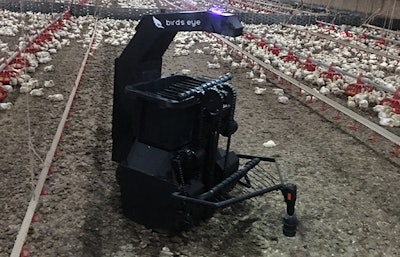
Birds Eye Robotics, a poultry mortality recovery robot startup that could help optimize labor, lower mortality and improve bird welfare, has closed an initial seed funding round.
“The common challenge we hear from poultry producers is access to labor. We’re on the hunt to provide assistance with that pain point via the robotic solution we have built. This injection of capital allows us to help producers, quicker,” says Bird’s Eye Founder/CEO, Scott Niewohner.
“Putting this technology into the chicken houses in the next few months is what we’ve been waiting for since day one.”
The funding will be used to complete several new units of the robot, allow for the deployment of the robots in concert with partners/growers, increase the data acquisition capability of the robot and user interface software and hire new team members.
Invest Nebraska, Burlington Capital Ag-Venture Fund, Ag Startup Engine, Innova Ag Innovation Fund IV, LP led the investment round.
“Labor and the lack thereof continues to plague certain segments and regions of the farming industry. Bird’s Eye Robotics is laser focused on improving grow-out barn operations for both the producer and significantly improving the health/welfare of the birds within,” explained Dean Didato, Partner with Innova Memphis.
“We see adoption of this technology to answer a critical need that is expected to only become more significant in the near future.”
A replacement for repetitive manual labor
The poultry mortality recovery robot can be used to pick up deceased birds in poultry houses, freeing up workers to perform other, less repetitive tasks.
The latest model uses sensors that combine into a neural network, a form of machine learning that helps a computer learn a task. They have also used computer vision to train the robot to recognize whether a bird is deceased and needs to be retrieved.
The poultry industry – along with many other jobs that require repetitive manual labor – had already been moving toward automation prior to the pandemic. The COVID-19 pandemic accelerated that trend.
The robot is designed to perform a recovery sequence four times a day, taking a different route through the poultry house each time. Once a sequence is completed, the robot returns to its charging station to power up.
Like what you just read? Sign up now for free to receive the Poultry Future Newsletter


















